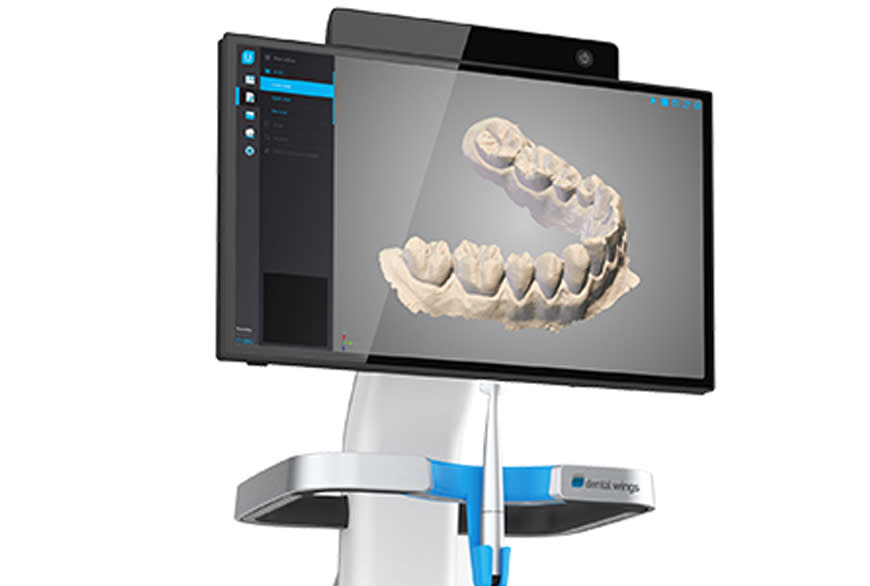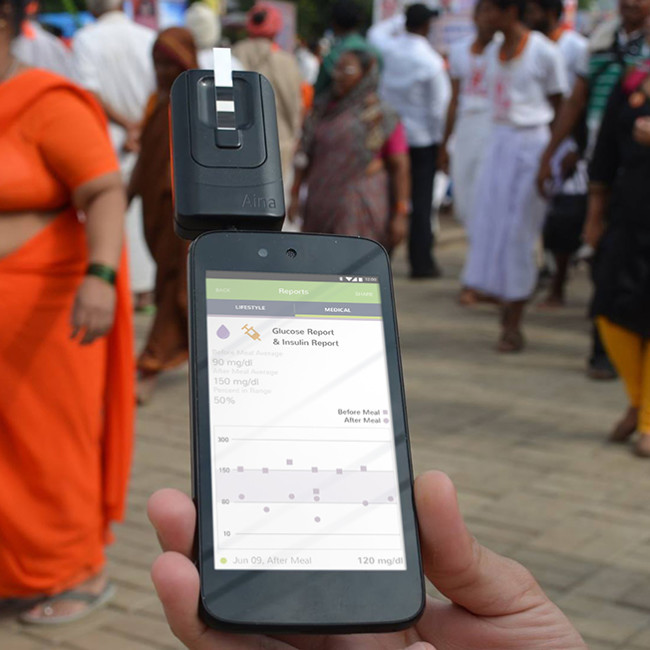Dental Wings: 3D Intraoral Scanner
Dental Wings sought to create the next generation of 3D dental scanning equipment and software.
Dental Wings sought to create the next generation of 3D dental scanning equipment and software.

01
Challenge
Digital impressions are an emerging technology in the dental industry. Most impression methods use a semi-solid material to obtain a patient’s tooth geometry. In addition to providing a poor user experience for the patient, these methods suffer from a key source of error: the results are technique-sensitive and can lead to inaccuracies in the resulting prosthetics. By scanning a patient’s unique geometry directly into a digital format, the dentist quickly and seamlessly transfers data for the design and manufacture of custom-shaped dental prosthetics.
Dental Wings asked Continuum to partner with them on the design, development, and delivery of a 3D intraoral scanner. They sought to create the next generation of 3D scanning equipment and software for use in dental practices, dental laboratories, and industrialized dental production facilities.
There were three primary goals for this project: (1) develop the simplest overall workflow between dental practice and laboratory; (2) provide the most comfortable experience for both the patient and the dentist; and (3) offer the most affordable system while delivering performance on par with or exceeding that of competitors.
02
Research & Insights
You Needn’t Look at the Monitor
In a typical digital intraoral scanner, the dentist must look at a console display to evaluate the real-time progression of the scan. This need competes with the consideration of the scanner’s trajectory within the patient’s mouth, to avoid hitting teeth and causing patient discomfort. Continuum developed a simple, unambiguous visual signaling system, located on the DWIO wand, to indicate the real-time quality of the scan results. This shifts the dentist’s focus primarily to the wand, where the dentist would normally look when operating a standard dental instrument.
Simplify Sterilization and Cleaning
Regulatory bodies have safety directives about how disinfection or sterilization should take place. These directives can be burdensome to follow, make products difficult to use, or encourage less-than-ideal cleaning procedures. By designing generous physical spacing around elements that have patient contact, we simplified the cleaning process and allowed optional use of barrier covers. We also outlined a workflow that included simple accessories to ease the task of disinfection.
Eliminate the Foot Pedal
Most scanners employ a foot pedal to control the start and stop of digital scanning. Foot pedals are cumbersome (and unsanitary) to position, especially in small offices where a single unit might be transported between dental suites. Once positioned, they are easily kicked away and can be frustrating to find underneath the dental chair. Also, complications arise if the foot pedal requires multiple functions. We incorporated a gesture control module for high-level, non-contact control of the scanning parameters by the dentist. This eases the dentist’s interactions. Dentists often sit on the far side of the patient from the console and wear gloved hands during the procedure. By incorporating a simple and small set of gesture controls, the dentist can conduct all necessary interaction with the console.
Shrink the Wand
Inspired by the existing design of dental instruments, we studied the patient-dentist interaction, dental instrument geometries, and system performance. Our user studies influenced the broader technical team designing the sensor, and vice-versa. The result? The smallest wand in the industry, which provides greater comfort for the patient and allows the dentist to interact with a wand similar in size to instruments with which they are familiar.
Make It Affordable
We worked to determine key partners for our client. For example, the finish of the wand is a biocompatible finish, amenable to low-cost manufacturing. This key selection provided the desired look and feel, thermal performance, and size expected by the dentist. The wand cable material is responsive to two types of disinfection protocols and represented an affordable, low-cost solution. In conjunction with our client, and by careful consideration of off-the-shelf versus semi-custom approaches, we determined simple and low-cost ways of specifying a computation engine and its thermally appropriate enclosure.
03
Solution
The DWIO 3D intraoral scanner allows a dentist to take chair-side digital dental impressions in a natural, fluid manner. By scanning the imaging wand over the patient’s teeth, the dentist can capture continuous 3D data of the teeth and soft tissue from multiple angles. The image-stitching processing happens real-time, allowing a dentist to hold a consultation with a patient immediately after scanning to discuss future treatment options, reducing the number of visits needed for the patient and overall time in the chair.
04
Results
While the scanner is brand new to the market, Dental Wings is extremely pleased with the early results, for three reasons. First, dentists find new scanner extremely appealing. Second, in the competition for distributor mindshare, a chair-side solution makes the company look attractive, so distributors may be more inclined to represent them. Third, Dental Wings feels confident in the compact size of their sensor, and they believe they have the most comfortable scanning solution on the market. The company strongly suspects that their new workflow will be a hit with dentists because it is simpler than the competition’s offerings.



